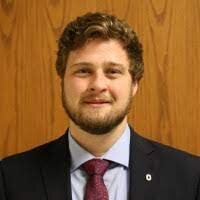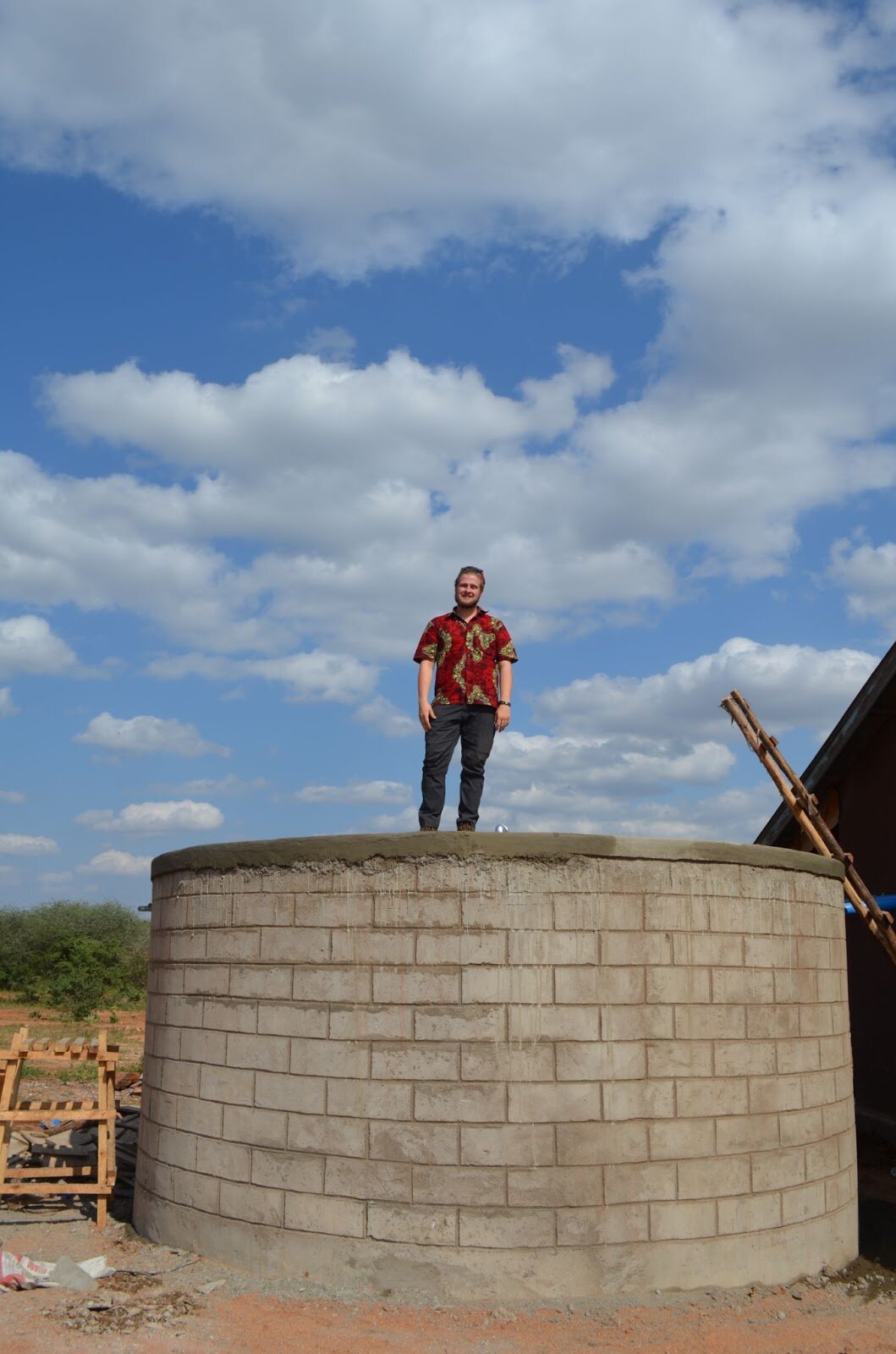A Senior Lecturer at The Ohio State University (OSU), Patrick Sours initiated and currently leads the AguaClara Program at OSU. His focus is within the Global Engineering space where he teaches and leads water related research and projects. A full interview with Patrick is available below.
Please introduce yourself. What is your name, occupation, background etc.?
My name is Patrick and I am a Senior Lecturer at Ohio State University (OSU). I've been working in the Global Engineering space since 2013. I did my undergrad here at OSU studying Civil Engineering with the Humanitarian Engineering minor and the Global Option distinction. I have worked on projects in Honduras, Guatemala, Tanzania and Central Ohio. I decided to pursue graduate education at OSU in the Food, Agriculture and Bioengineering Department as they have been working to build more opportunities for students in this space. My project was on the construction and optimization of rainwater harvesting with a rural community in Tanzania.
Patrick with the 2017 rainwater harvesting rank. Marwa, Tanzania (2017)
When I finished my M.S. OSU hired me to teach and manage the Sustainable Resilient Communities (SRC) Program, which is one of our community engaged learning programs, so now I teach Global Capstone, CE 5610: Sustainable Infrastructure for Developing Rural Communities and service learning courses in Ghana, Honduras, and Tanzania.
How did you come to focus your work and research on water specifically?
I studied civil engineering in undergrad, which is very broad, and then I got more and more interested in water. Driven from my work on the Maji Marwa Project, a project in Tanzania focused on delivering a reliable source of clean drinking water to a rural Maasai community. We're hoping to take water from the Pangani river, pump it up to the high point, pass it through an AguaClara treatment plant, and then gravity distribute it back out to the community. So that project started with a rainwater harvesting project. We were building relationships and capacity with our NGO and university partner.
Community members assisting in the gathering of stone for a rainwater harvesting system. Marwa, Tanzania (2019)
Over three years, the community implemented three rainwater harvesting tanks totaling about 100,000 liters of water storage capacity, providing around 300,000 liters a year to two schools and a community health center. This work is what led me to a focus on water.
My interest in water was spurred by seeing how it is so intertwined with all other aspects of community development. With water being such an integral part of daily life and seeing the difficulties caused by lack of access to water is what motivated me to focus on this area.
How did you first hear about AguaClara Reach?
While working on the Maji Marwa project, we were looking at different treatment plans to build with our partner community in 2017, and somebody stumbled across the AguaClara design. I remember we were in a meeting and someone mentioned Monroe [Weber-Shirk], and then the Professor that I work with here, Dr. Michael Hagenberger, a Cornell graduate connected with Monroe.
Of course, Monroe was excited to share his insights with us via Zoom. The following year we had a student that was really interested in the AguaClara treatment system and went to Cornell for the summer to work in the lab.
Then about two years ago we really upped our engagement. With a lot of that coming through AguaClara Reach, and this is when we decided to bring the physical research to OSU to be one of the first projects in our Global Engineering Lab. So I'd say the last year has really been the biggest growth, especially working with Matt [Cimini] and the folks on the RIDE committee has really been instrumental in moving us forward.
What inspired you to decide to set up an AguaClara program at Ohio State University (OSU)?
Really what inspired me to work on setting up this AguaClara Program at OSU was when I was down in Honduras visiting Zamorano University for a different project. Zamorano actually has an AguaClara treatment plant as their drinking water source, and this was before I had even really had that much interaction with anyone in AguaClara. I was able to tour the plant and I remember thinking that there was nothing there that we wouldn't be able to source in our community in rural Tanzania. I saw how seamlessly everything worked together. So that was really kind of the inspiration moment where I was able to see it in person and then I was all in from there.
Do you have any personal stories you’d like to share about why providing people with access to safe water is important to you?
I can think of one story that is part of my motivation the first year we were working on the rain water harvesting project in Tanzania. We were at the construction site and they had all the gutters up and it started to rain. And there was an elderly Maasai man who was watching the rain come through the gutters and he went over and filled up his water bottle and he was so excited. For me, just seeing the excitement on his face and the excitement from the nurses at the medical clinic, the realization that they were going to have water at the medical clinic and were not going to have to source water from the river anymore.
Community members and an OSU representative place the concrete roof slab on the rainwater harvesting storage tank. Marwa, Tanzania (2018)
That moment really sticks with me because it's something just seeing how excited they were for those tanks to be completed. There's still a lot of work to be done with the community and I'm hoping as COVID starts to trend downward we're able to get back and rehash all of those relationships and partnerships and keep moving forward.
Could you please give us an update on the AguaClara Program at OSU this semester?
Essentially, what we've been working on this past year - we have two aspects of the work that AguaClara does being integrated into our Sustainable Resilient Communities Program. One is the global capstone, one of the new projects that we plan to offer to the students is a project that will incorporate some of the AguaClara Reach design technology. Matt and Zoe [Maisel] have been helping to scope that project.
The other thing that's really gotten going this past year is our research initiative with graduate and undergraduate students. We have about half a dozen students that have been really excited about an opportunity to build out one of the StaRS filtration lab setups. So we have three students that have been working with me this summer to get that all set up, get all the parts procured, and figure out what needs to go together and everything. So that's kind of where we're at right now. The plan for the fall is to hopefully finish the construction by the end of the summer and then get into the actual testing and theoretical research in the fall.
Students in the Global Engineering Lab working on the AguaClara StaRS filtration system. OSU (2021)
What is one challenge you have overcome or are in the process of overcoming in your work with ACR?
The hardest part is that there's a lot of institutional knowledge at Cornell. Trying to get all of the knowledge about the systems transferred here and to the students, has been a lot. I know it has been a lot of work for the folks at AguaClara Reach, the RIDE Committee, Matt and Zoe, and all of them that have been helping us get up to speed on all of that.
Most of the knowledge transfer is virtual meetings and having conversations through Slack. And then the different reports that have been produced as part of the ACC Program over the years, reading through those and asking questions.
The amount of materials and supplies that we have to procure to get everything set up has been a heavy lift. It has been slow but it's been a steady build with the aim to start recruiting a few more students and then really build out the AguaClara OSU program over the next few years.
What are some influencing factors that have driven your career and outside-of-work choices?
I traveled a lot with my family growing up, and then when I came to OSU I took advantage of all the travel opportunities that they have here with study abroad and service learning. It started as going somewhere new and interacting with new cultures and then, as I did those things I wanted to integrate my engineering skill set into working on projects that I felt really mattered and was making a difference in people's lives. That's one of the influencing factors that drove me to stay in this academic route and then working with the communities and working with different people.
And then also as I stay in this academic world, working with the students has become important to me because I see how impactful a program like the AguaClara program or the SRC program that we have here is, and how that can really allow students to feel a sense of belonging. I had a student this past semester who was graduating and he said, “I never really felt like I belonged at OSU until I joined this program”. To me, that was just so exciting that a student who was coming to the end of their academic career who hadn’t really felt that sense of community was able to find a group of peers to interact with and make those connections.
Any final thoughts or advice you would like to share with other schools that are also interested in starting AguaClara programs?
I love the idea of growing and expanding the AguaClara mission and the research projects. It has been a lot of work but finding a few dedicated students or faculty members that are really interested in it has made all the difference. I truly believe in the AguaClara technology and mission and feel that it really can make a difference in people's lives.
Photographer: Patrick Sours
Interviewer: Alison Xu
Transcriptions and Translations: Alison Xu
Interviewed: June 2021
Author: Alison Xu





